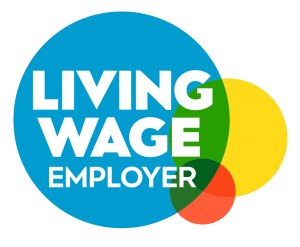The current exhibition at Kettle’s Yard in Cambridge, curated by Guy Howard and Dr Amy Tobin, focuses on the body of work produced by Issam Kourbaj (b. 1963) from 2011 onwards. This year marked the start of the war in Syria, and the subsequent and still ongoing displacement of its people along with the destruction of their heritage and culture. Kourbaj is originally from a small town, Seweida, in a volcanic region in the south of Syria, and moved to Damascus to study art at the Institute of Fine Arts, before later training at the Repin Institute of Fine Arts and Architecture in St Petersburg. Since 1990 he has lived and worked in Cambridge as an artist in residence, and a lector in Art at Christ’s College.
The exhibition focuses on themes of loss, displacement, memory and survival. It includes diverse media techniques, ranging from installation to sculpture to performance and works on paper. Its key feature is the “continuum” character of the display, which continues to change; the artist adds new pieces as the show is informed by the ongoing conflict in the Syrian region, and also other places in the Middle East. It is a platform the artist uses to respond to contemporary unfolding events and make the visitor reflect on its important themes.
The title of the exhibition “Urgent Archive” is an oxymoron in principle. On the one hand, the adjective “urgent” (‘agel in Arabic) can refer to the quickness of assembling pieces and memoirs in a rush, and in Arabic it can be used as an adjective for people that are not patient and run around in a hurry. On the other hand, notions of archive bring to mind the safe and still space of a basement, or of a library; something that contains important historical information, that is built through time, and that usually refers to the past. In this exhibition, on the contrary, the archive is urgent, is still in the state of creation, is related to the present situation and is driven by an urgent need to record the happenings, the lost lives, and the culture and heritage destroyed. It can also be an appeal to the viewer, as in the case of the artwork Do not wash your hands (2017). This installation piece acts as a reminder to the public to please not wash their hands of the Syrian war, to remember, and to reiterate the message that the destruction must stop. The artwork is made of a broken sink, on which is placed a mirror frame without a mirror, and on the right, a small holder (which has a mirror at its base) that holds a piece of Aleppo soap.
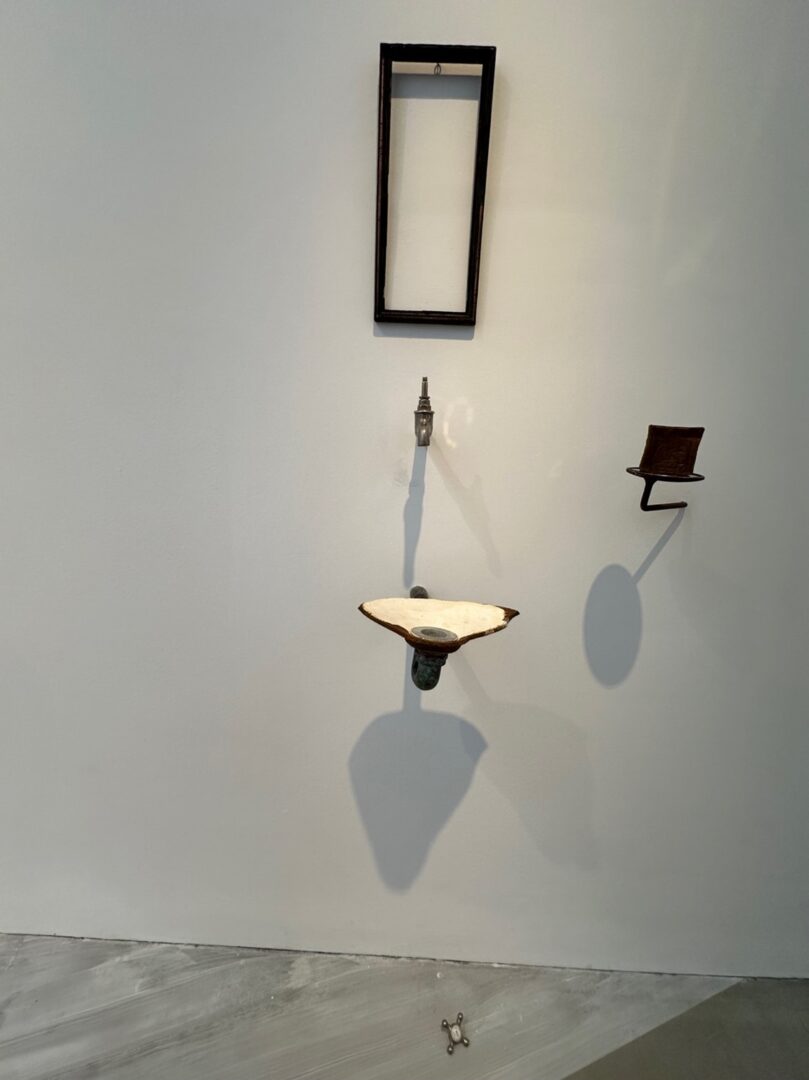
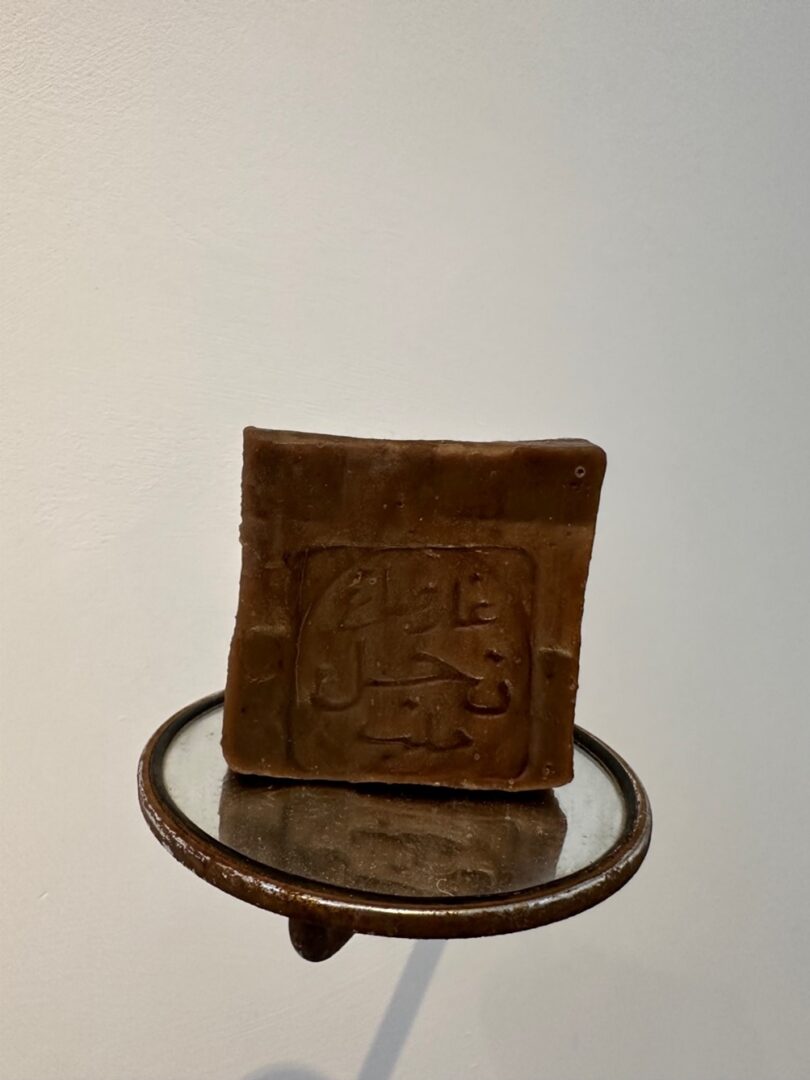
The soap in Do not wash your hands is not like any other soap. Aleppo soap is famous for its ancient recipe – made using local materials – which has remained unchanged for thousands of years. The same material, Aleppo soap, welcomes the visitor in the second room of the gallery, with its distinctive fragrance. On the floor, a fortress-like structure lies in ruins, on top of a small hill. The work is a reference to the lost cities, which have remained abandoned for a long time, but that are today re-inhabited by displaced people looking for shelter.
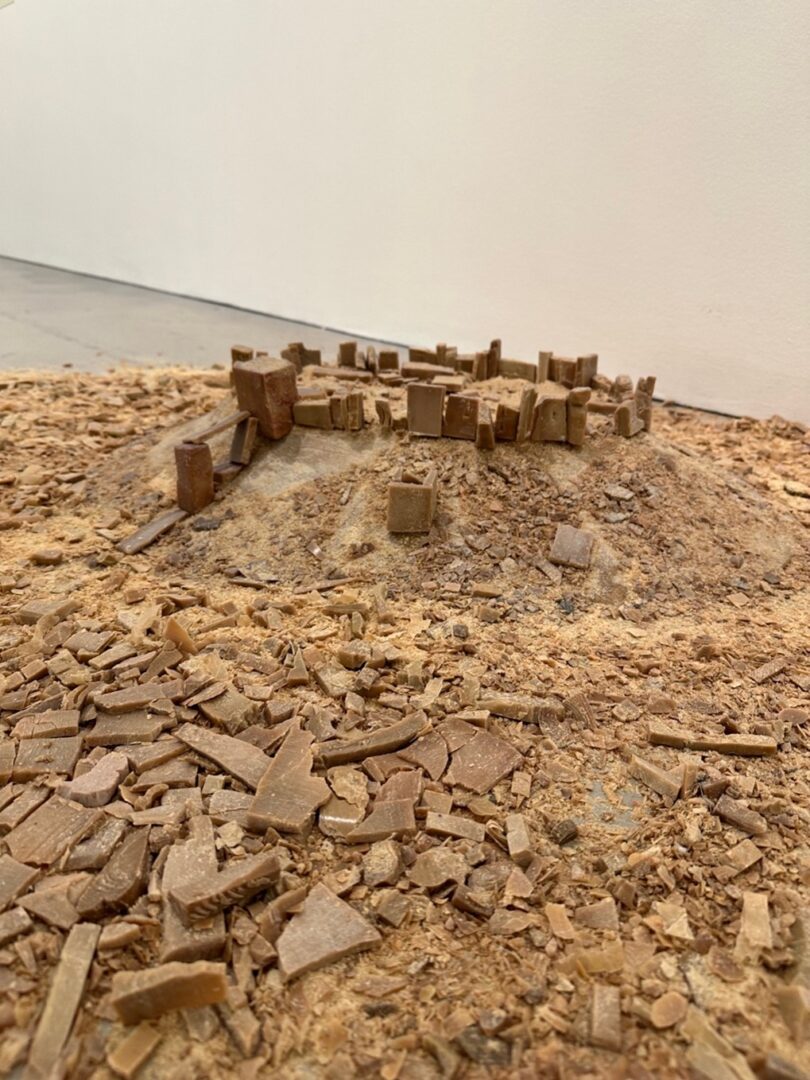
This artwork is one of the most powerful in the exhibition, in my opinion. The distinctive fragrance of soap became stronger and stronger as I sat on the floor to examine the citadel. The strong scent brought me back to the Syrian market I used to go to in Yerevan, Armenia, where a large Syrian community works and lives. What strikes me in particular is how the earth, the piece of soap and the buildings still standing share the same colour and material. I am struck by the fragile state of the remaining buildings and the unavoidable thought “How long before it will all become ruins?” When faced with this thought, I realise what sensations the people living in Syria might be faced with every day. How long can they still remain? How long will their cities still stand?
Going back to the exhibition display, another important material that surfaces numerous times across the whole exhibition is seeds. Seeds of wheat have been sown by the artist, they are seen sprouting from video footage, and they are depicted in large-scale photographs after the artist burnt them. The importance of seeds, for the artist, can be described as a hidden power, a living archive, as it is only through their burial in the soil that they can grow new life again.
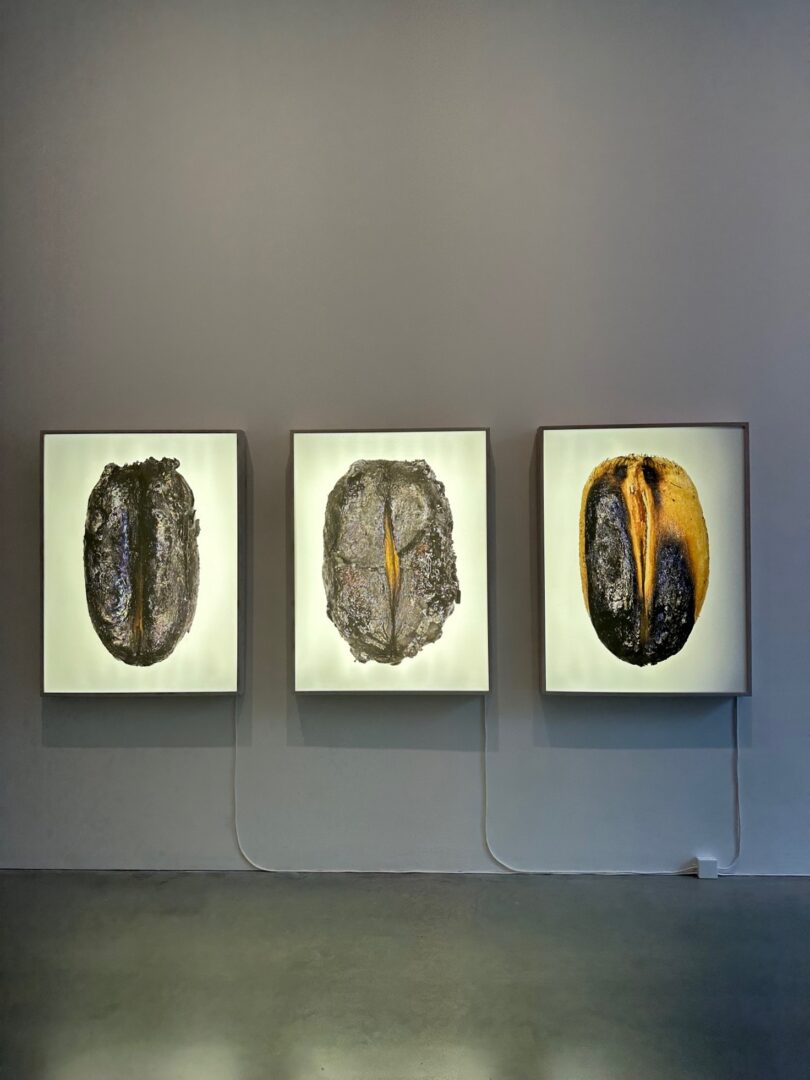
The title of the exhibition also references one of the main pieces in the gallery, named Urgent Archives: Written in Blood (2019), which is an installation occupying a great portion of the central floor in the second room of the gallery. It references the practice of human rights journalist Mansour Omari. During Omari’s imprisonment in a radar facility in Syria, he wanted to record the names of the other prisoners to give their families the news that they were still alive. However, in the appalling conditions of imprisonment they had no materials to record them other than small pieces of clothes and their own blood. Kourbaj references this archive by creating his own version, written on top of repurposed paper from old books, and their covers.
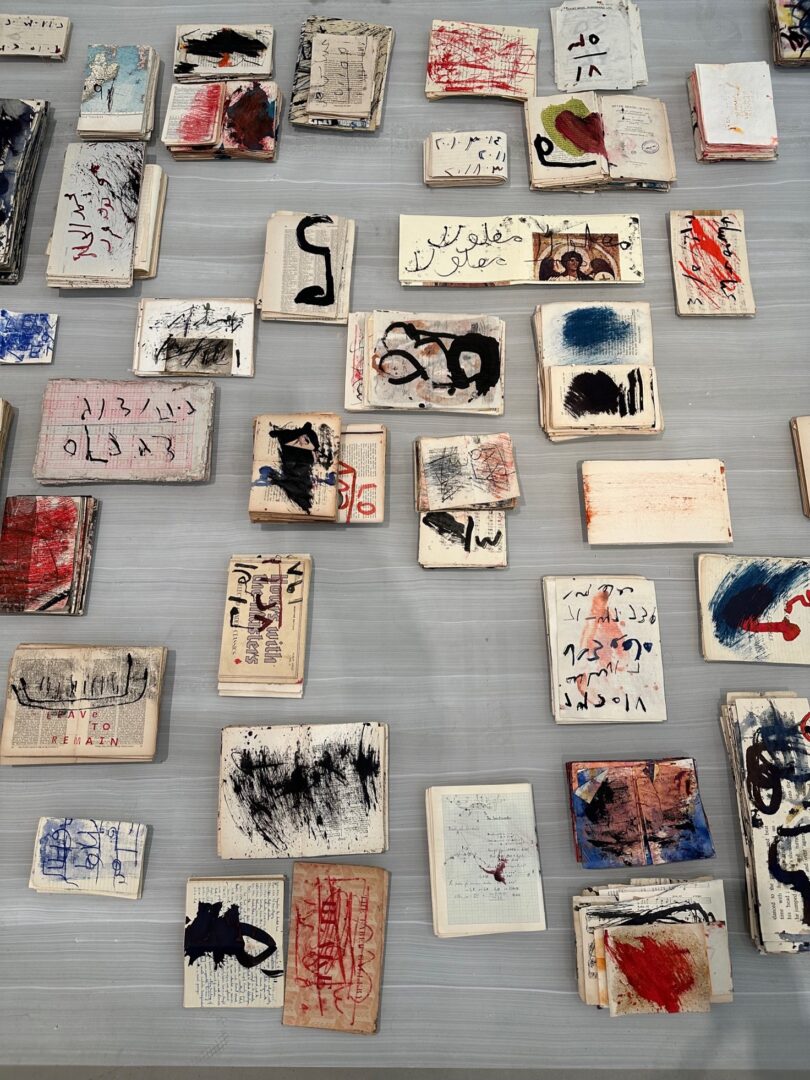
The exhibition starts outside Kettle’s Yard, on Castle Street, where the names of the women murdered in the conflict are written while approaching the entrance, and other windows are painted with indigo blue, which was a practice Issam Kourbaj carried out as a child to protect his house. People living close to the border, for the sake of avoiding nocturnal bombardments, would paint their windows with this colour, which stops light from passing through it, and therefore prevented Israeli airplanes from seeing the lit houses.
The most surprising feature of the exhibition is that it continues to be ongoing. New date stones are sewn every day onto the tent of Our exile grows a day longer and a day closer is our return (2024), a new work on paper is added to Agony: 158 moons and counting… every new moon, while the wheat continues to grow.
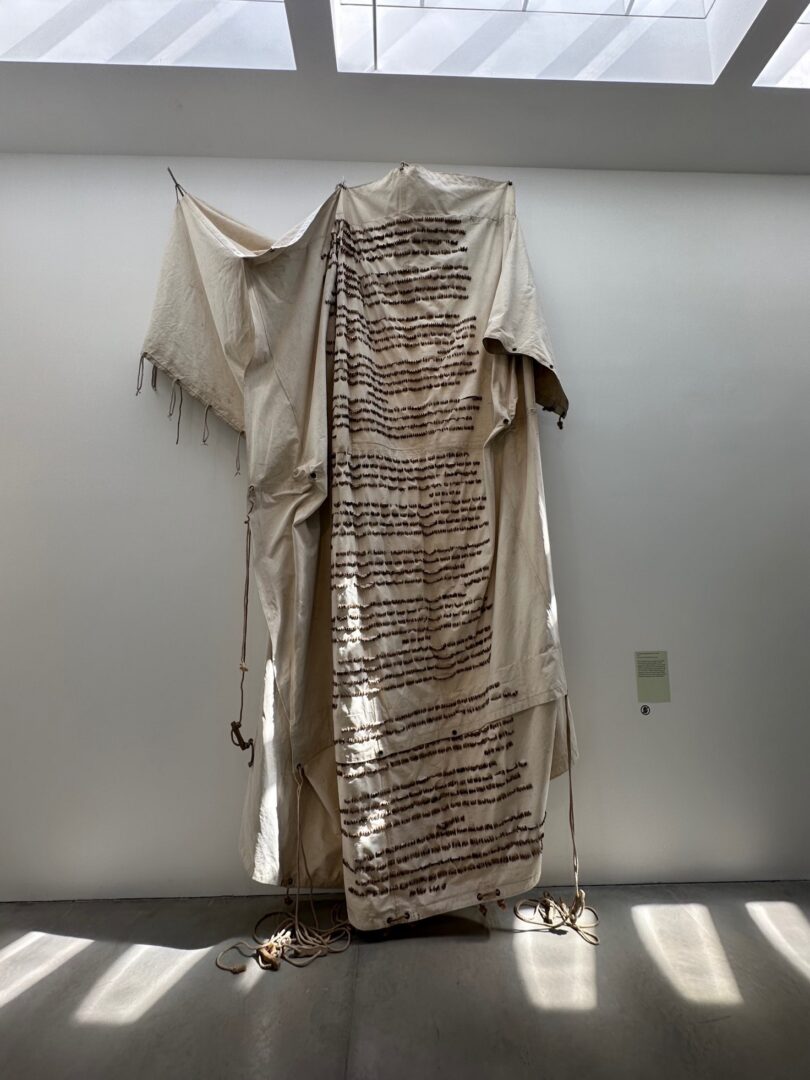
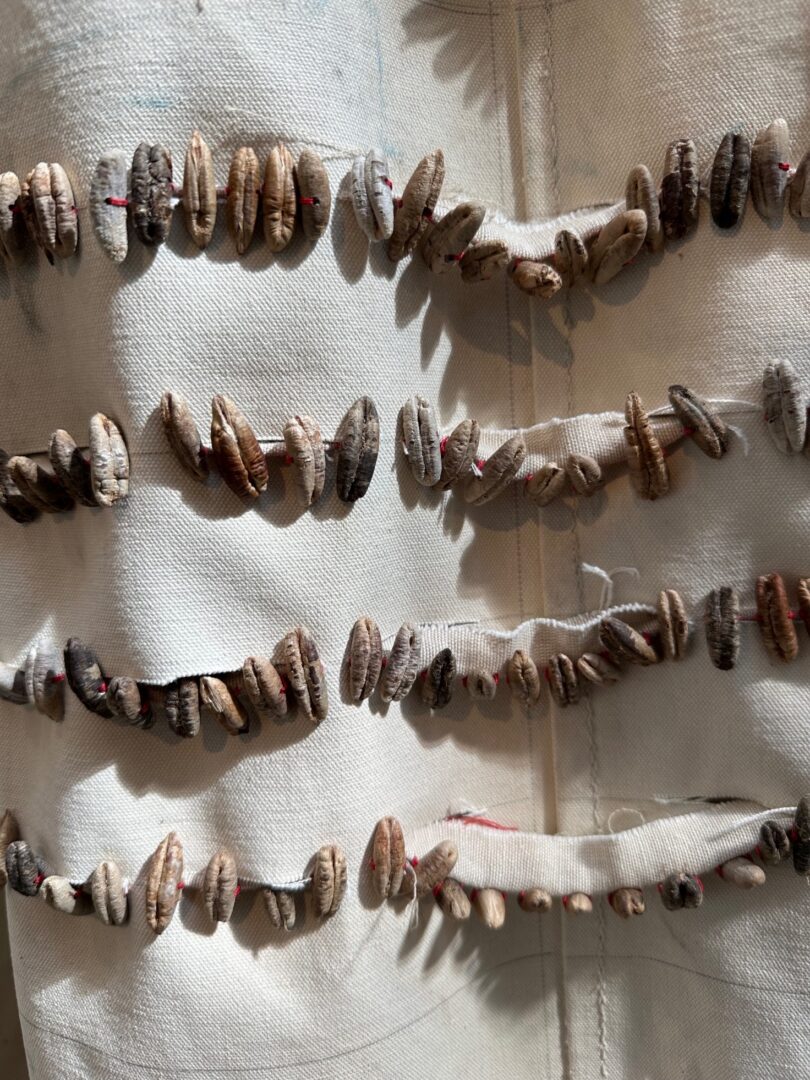
“Issam Kourbaj: Urgent Archive” is a powerful exhibition that engages the viewer in a dialogue about strongly human themes like loss, memory, war, and destruction. The artist stands against the destruction of cultural heritage in Syria and protects it by creating memories, and by recording the lives of people and places that have been lost. This position, and his appeal to stop destroying, is clearly perceptible in the space.
The artworks by Issam Kourbaj reflect on the potential of art to mediate the comprehension of traumatic events and their impacts on individuals, countries, societies and the creation of memories. This is something that I will personally bring home with me: the knowledge that everyone has the power to create archives, and to remap regions and places, by recollecting and sharing memories, collecting and creatively assembling meaningful objects and texts.
One of the artist’s favourite sentences is “Leave to Remain”, which is referenced in numerous of his artworks. When I first heard this sentence I reflected on its oxymoronic structure and the situation of displacement that it encapsulates. I started thinking about how many people, in the world today, need to leave in order to remain. It is a phrase that can be interpreted in numerous ways, in terms of places, but also in relation to the essence of one’s self. Sometimes to remain who/what someone is, there is the need to leave a place, whether physically or existentially. Surely, I will keep pondering on this juxtaposition of words and the infinite meanings it can produce.
Written by Giorgia Maffioli Brigatti
“Issam Kourbaj: Urgent Archive“ will run until 26th May 2024; for more information, see the Kettle’s Yard website and the catalogue of the exhibition. The artist is also exhibiting “You are not you and home is not home” at The Heong Gallery (Cambridge), and there will be a concert on 17th May on Cultures of Conflict. To learn more about the intersection between global stories of conflict and Cambridge culture, you can book on our Uncomfortable Cambridge tours which will be running every weekend this month and beyond. Finally, if you’re interested in the theme of Arab diasporic identities and heritage preservation, why not read our interview with author Isabella Hammad about her novel “The Parisian”, or our biography of pioneering Assyriologist Hormuzd Rassam?
(All photographs were taken by the author)
